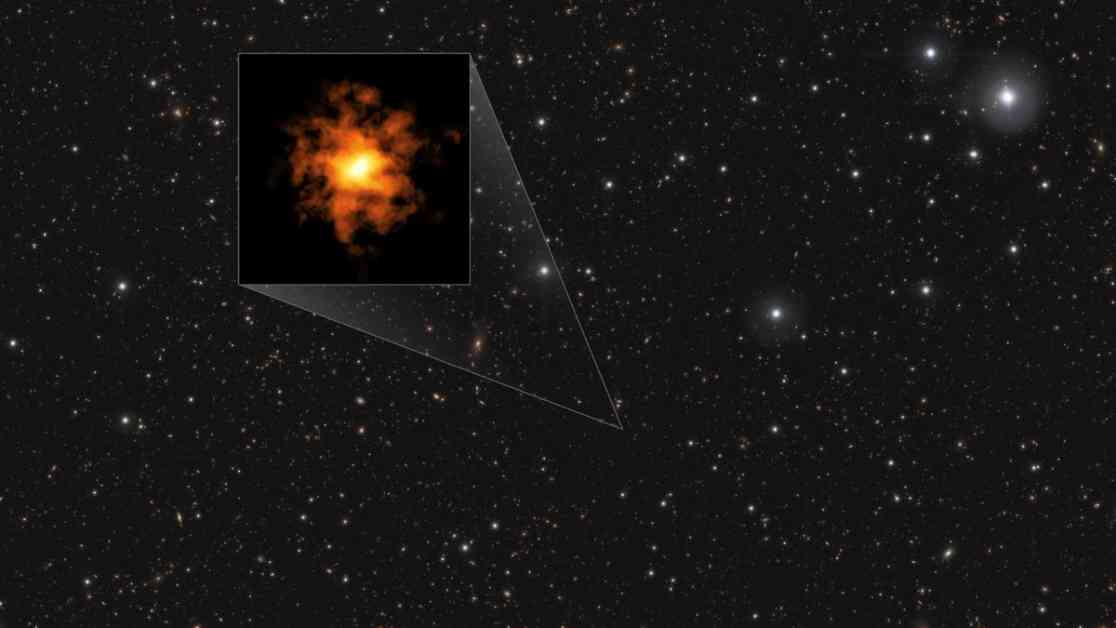The discovery of the ancient spinning galaxy REBELS-25 has left astronomers astounded and questioning our current theories of galactic evolution. This galaxy, spotted just 700 million years after the Big Bang, challenges the expectation that early galaxies should be small and chaotic. Instead, REBELS-25 appears to have a tidy and orderly structure with spiral arms similar to those found in more evolved galaxies like our Milky Way.
A team of astronomers used the Atacama Large Millimeter/submillimeter Array (ALMA) to discover REBELS-25, the most distant and early rotating disk galaxy ever seen. This galaxy’s existence challenges the traditional timeline of galaxy evolution, as it displays characteristics typically associated with more mature galaxies that have had billions of years to develop distinctive shapes.
The discovery of REBELS-25 raises questions about how quickly galaxies in the early universe evolved into the structured and organized galaxies we see today. The galaxy’s strong rotation-dominated nature challenges our understanding of galactic evolution and the timescale over which galaxies develop their current shapes.
Further study of REBELS-25 with ALMA revealed that it is indeed the most distant, strongly rotating galaxy ever discovered. The galaxy’s motion of cold gas indicates clear signs of rotation, making it a record-breaking find. Additionally, REBELS-25 may also possess features similar to those found in spiral galaxies, potentially breaking another record as the most distant and earliest spiral galaxy ever seen.
The team’s research on REBELS-25 has been accepted for publication in the Monthly Notices of the Royal Astronomical Society, marking a significant contribution to our understanding of galaxy evolution in the early universe. This discovery opens up new possibilities for studying the formation and development of galaxies and challenges our current theories of cosmic evolution.










